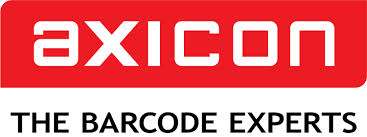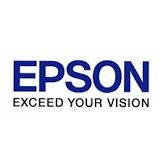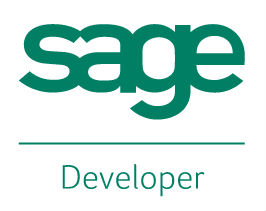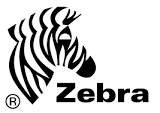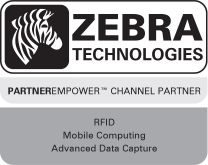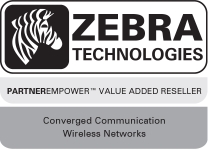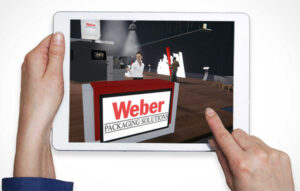Model 5300 Series Dual-Label Pallet Label Printer-Applicator
Weber’s Model 5300 Dual-Label pallet labelling system combines a high-performance thermal/thermal-transfer label printer with a specially-engineered articulating swing-tamp applicator to perform the printing and two-label, adjacent-side labelling of pallets in-line.
- Choose from a wide range of 203, 300 and 600 dpi print engines
- Capable of handling print speeds up to 16 ips
- Numerous I/O’s ease interfacing with external devices
- Monitor the labeller’s operation via a web browser
- Available with optional RFID capability
- An easy way to add a two-sided labeller after your palletiser system
Model 5300 Series Dual-Label Pallet Label Printer-Applicator
Designed and manufactured by Weber, the Dual-Label pallet labelling system features a selection of print engines, which includes 203, 300 or 600 dpi units from manufacturers like Zebra Technologies, SATO and Datamax. Print engines are available to handle pallet label sizes ranging from 4.0″ wide and up to 8.0″ long.
All systems print pallet labels with variable-sized text, bar codes and/or graphic images. Various print speeds are programmable at up to 16 ips.
As a label is printed, it is automatically peeled from its liner and retained by vacuum on a non-contact, tamp-blow applicator pad. The articulating tamp pad is mounted on a pneumatically-operated swing arm that reaches across the leading side of a pallet as it approaches the Dual-Label unit via conveyor. When the pallet is in position, a sensor mounted on the swing arm detects the pallet and the label is gently blown onto the lead panel of the pallet.
The swing arm then retracts to collect a second printed label which is followed by an articulated stroke that blows the label onto the adjacent side of the pallet to complete the cycle. Depending on the combination of label print engine, pallet size, conveyor speed and the proximity of the Dual-Label system to the pallet, up to five pallets per minute can be labelled.
Special Features & Options
This Model 5300 Dual-Label pallet labelling system includes a number of noteworthy features that add to the operational versatility of this printer-applicator:
• Browser-based monitoring: The status of all operational functions and configurations can be monitored by logging on to a web page that is unique to each Model 5300 unit.
• Numerous I/O’s: The system can be interfaced with many types of external devices.
• One-to-one media consumption: Special label unwind and rewind dimensions are matched to the system’s ribbon supply to ensure they are consumed at the same rate, reducing downtime and eliminating partial changeovers.
• Print job storage: Multiple label printing formats can be stored in the system’s memory, making it easier for an operator to select a job directly from the applicator instead of downloading a computer file.
The Model 5300 system boasts numerous additional features including a microprocessor controller with downloadable firewall capability, various inputs/outputs, plus durable construction that will withstand harsh industrial environments.
Other options include a 15-foot umbilical connection that enables the remote location of the unit’s controller, an adjustable stand for optimum system orientation, label-on-pad sensor for added functionality plus beacon light alerts to signal the status of label and ribbon supplies.
To facilitate routine maintenance, the system is programmed with built-in machine cycle diagnostics for self-testing of normal operating cycles plus input diagnostics that permit testing on specific functions.
Adobe Reader is required to open and view PDF files. This can be downloaded free from adobe.com.
Available Documents
5300_pallet_dual_labelMarkoprint Shutter Printhead HP

Inkjet nozzles can clog and dry up in a dusty printing environment, which is typical in wood-processing enterprises and other sectors. This results in poorly printed images. Our Markoprint Shutter Printhead HP prevents dust from entering the ink cartridge or gathering on the nozzles. During a production halt, the printhead automatically retracts the cartridge and shuts the open nozzle plate. After being paused for even several days, it is instantly ready to print again.
View ProductZebra FS70 Fixed Industrial Scanner
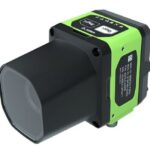
Today more than ever, the increasing demands of international commerce and its global supply chain are pressuring companies to deliver more — and to do it faster. From manufacturing to logistics to the end customer, success is driven by the ability to quickly move and track the products that drive your business.
The FS70 Fixed Industrial Scanner is your configurable and customisable solution. Easily keep pace with your business, enabling quality control and track-and-trace of every part and package as it moves through production, storage and fulfilment. Whether you need a high-powered lens to read a very small barcode from a long distance, or a wide-angle lens to capture barcodes on extremely large parts, the FS70 addresses it all. C-mount external lenses allow you to achieve the working range and field of view your application and environment requires. And compatibility with virtually any external lighting solution ensures reading of the most challenging barcodes — even low-contrast direct part marks or those printed on curved or reflective surfaces. The result? Best-in-class production, warehousing, distribution and logistics processes that inspire your business to reach its highest potential.
View Product
Markoprint Integra PP RAZR

Experience Effortless High-Resolution Printing: Introducing the Integra PP RAZR with Cutting-Edge Technology. Print Up to 34mm High on Virtually Any Product Surface with Ease. Be Amazed by the Permanent Print Head’s Impressive Resolution, Lightning-Fast Speed, and Integrated Redundancy. Plus, its Compact Design Ensures Seamless Placement in Any Production Facility.
View ProductZebra FS10 Fixed Industrial Scanner

A Quick & Compact Scanning Solution
The increasing demands on international commerce and its global supply chain are pressurising businesses to deliver more and deliver faster. From manufacturing to logistics to the end customer, success is driven by the ability to move quickly and track the products that drive your business.
Now you can address it all with the compact Zebra FS10 Fixed Industrial Scanner. With a slim profile, the FS10 fits easily everywhere you need scanning. Just plug the FS10 into the USB port of a workstation, laptop, tablet or any other host device to dependably capture barcode data, from assembly to storage and fulfilment.
View Product



